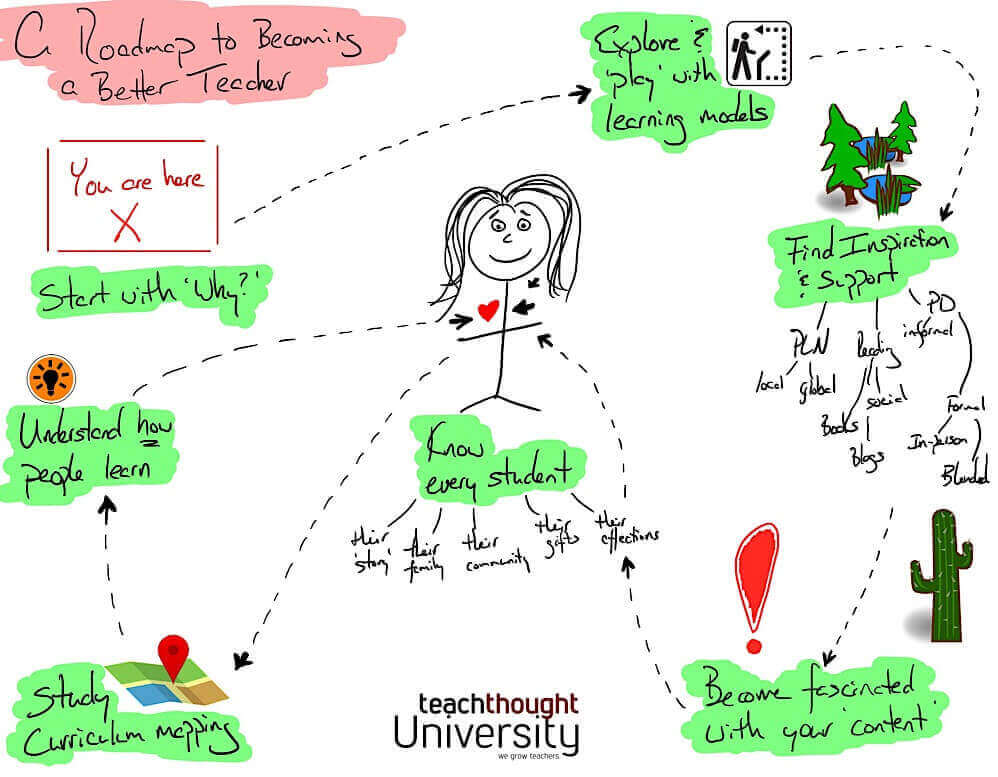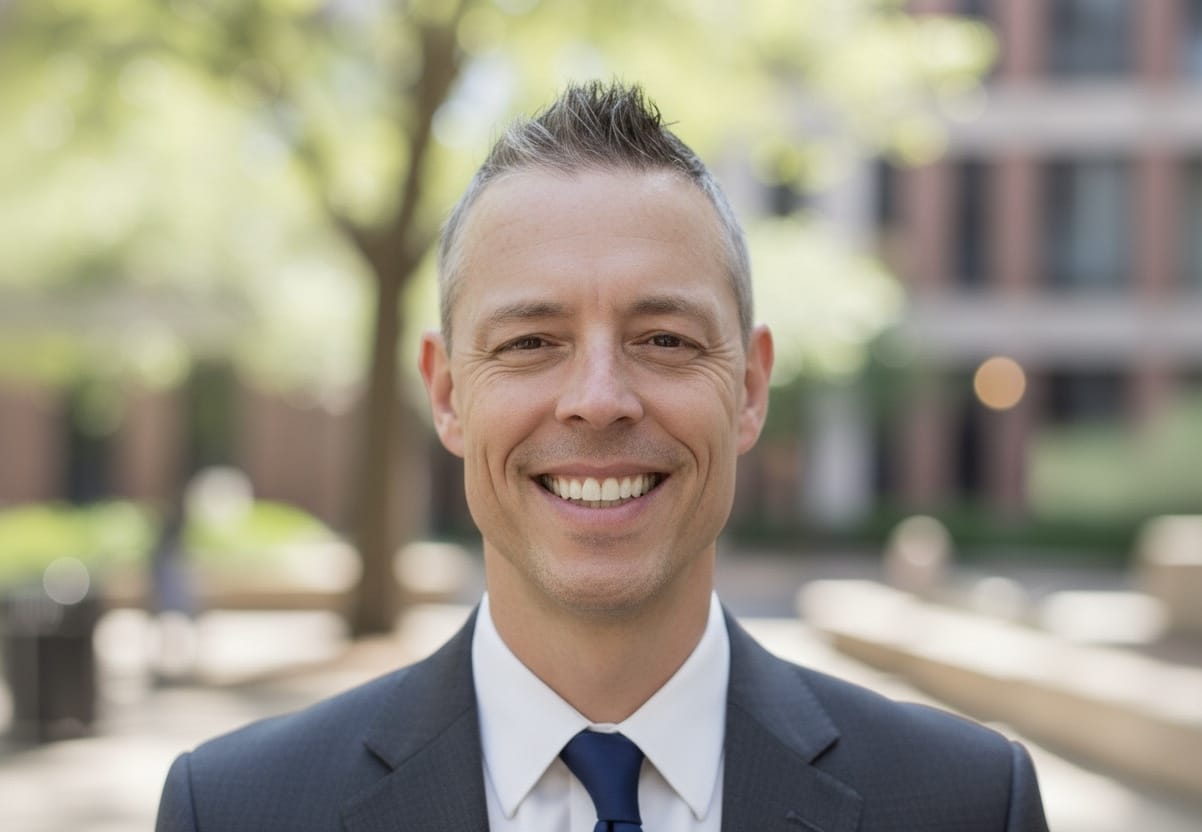
Prioritize, Practice, Refine And Reflect: A Road Map To Becoming A Better Teacher
by Terry Heick
Becoming a better teacher is not much different than becoming a better artist or farmer or architect or engineer.
Most broadly, improvement in teaching can be reduced to a matter of prioritization, practice, reflection and refinement. In ‘Outliers,’ author Malcolm Gladwell theorized that it takes 10,000 hours to become an expert. If you do anything long enough, the theory goes, you improve. Practicing 20 hours a week for 50 weeks for ten years should readily produce expertise of some kind or degree.
It’s hard to argue with that idea. You practice walking so that you can walk, drawing so that you can draw, and speaking a foreign language so that you can speak with someone that speaks a different language than your own. Each of these skills is different in the abilities they require, but all can be improved through practice.
Assuming you’re practicing the right bits. It wouldn’t make much sense, for example, to practice speaking a foreign language by focusing primarily on the movement of your mouth and the position of your tongue while vocalizing words from that language. Being able to move your mouth to make certain sounds matters, but practicing those movements without knowing the words that require them, or the subject-verb patterns, or how to conjugate from one tense to another would be silly, and certainly would never yield anything close to expertise.
In every physical movement–of an athlete, for example–there is an economy of motion that is just right–specific barely-noticeable expressions that characterize that movement done well. A basketball player will make dozens of movements in producing a jump shot, but it is their ability to elevate with balance while tucking their shooting arm in, then releasing the ball at the right time all without taking their eyes off their target that will produce a ‘pretty jump shot’ that goes in the basket with any consistency.
1. Identify all the ‘bits’ and pieces
2. Prioritize those most critical that can anchor the rest
3. Practice those prioritized bits
4. Reflect on your performance
5. Refine those bits based on the reflection
6. Transfer those refined bits to new and authentic ecologists (that can produce new data for further refinement)
This is a general 6-step process for improvement, and just so happens to parallel biological evolution in many ways. It is the context of the application (of a gene mutation in this case) that determines whether or not that mutation is ultimately ‘good’ or ‘bad.’ Evolution is simply a process of refinement based on the success of a given trait in a given ecology and context. How a species improves is how the individuals within that species can also improve themselves.
Right, so this road map. I’ve really ruined the cartographical nature of the metaphor, but I’m not going back and changing the image now, so let’s get back to it.
Prioritize, Practice, Refine And Reflect: A Road Map To Becoming A Better Teacher
1. Start with why
Why did you become a teacher?
Why do students need to understand this (whatever it is they’re studying in a lesson)?
Why did you use that instructional strategy or learning model?
Why do students love this particular unit or lesson or project, and what can you learn from that?
When you start with why, you start with the purpose and passion and big ideas and emotions and affections that galvanize all the other bits.
This is how teachers improve.
2. Explore & ‘play’ with learning models
Become as experimental and playful using learning models (e.g. Sync Teaching or Flipped Classrooms) as you are with ice breakers or writing prompts. Learning models are approaches to learning. They are as much art as science, and crucial to the evolution of any teacher in the 21st century.
You’ll never learn how to use them unless you learn how to use them.
3. Find inspiration & support
So this is a big one: You can’t care for the people around you if you aren’t cared for yourself. Education has enough martyrs. Find support to make teaching sustainable, and inspiration for the days when it doesn’t feel that way.
4. Become fascinated with your content
The next stop on your road map to improvement as a teacher is the piquing of your own curiosity–not with pedagogy or learning models or students or even academic standards, but rather with the content itself. By becoming curious about what you teach, you’ll model for students how to do the same in how they learn.
And this part can’t ever stop. The world never stops changing, and your content area is a part of that world. Math isn’t the same as it was in 1987. Literature isn’t either. Or any of the rest if for no other reason than the spaces students consistently use knowledge within change endlessly as well.
You have to teach Moby Dick in light of theological intolerance, or physics in light of electric cars, history in light of the blurring of political borders, and government in light of the recent failures and successes of that government.
5. Study curriculum mapping
No matter how passionate you are about your content, and how inspired you can make yourself to be, or how consistently innovative the learning models in your classroom are, if you can’t distill that content into digestible bits, then arrange and sequence them in a way that provides countless opportunities for students to encounter that content–to ‘practice’ it in increasingly complex and alien contexts, the rest won’t matter.
Education, perhaps more than anything else, has a curriculum problem, and the mapping of that curriculum is a big parent of that.
6. Understand how people learn
You can study neurology if you’d like on this stage of your road map. ‘Brain-based teaching,’ as some call it. You can study Bloom’s Taxonomy or the Heick Taxonomy (forgive me) or DOK levels of higher-order thinking skills or use critical thinking stems and prompts–this is all part and parcel to how people learn.
But there’s also emotion to it–why place matters in learning, for example. And curiosity. And how they use technology to find information and share it, too.
Further, to understand how people learn, you have to understand where they learn, too. This is near the core of personalized learning and should be a common stop on your ongoing journey of teacher improvement.
7. Seek to know every student equally
The final destination (well sort of–you’ll see what I mean in a moment) of your journey to teacher improvement is the students themselves. It could be argued that this should be both the beginning and end, and ‘Start with Why’ certainly leaves room for that.
Good teachers don’t teach content, they teach students. Great teachers don’t teach ‘students,’ but rather that student in that place with those knowledge demands. This is likely impossible in most cases; knowing every single student with affection, and then adjusting your teaching and their learning in response isn’t practical or sustainable.
But if it were somehow possible–through some combination of learning models and teacher genius and expert application of scintillating technology–it’d change everything.
8. Go back to ‘why’ and start again
Of course, this isn’t a sequence necessarily even though I guess I did draw it that way. You can start at number five and go back to one and jump ahead to four. That’s up to you based on who and where and what and how you teach. The idea here is that ‘Why?’ is among the most crucial questions in any circumstance hoping to produce critical thinkers.
Always go back to it when you feel stuck or need some inspiration (see stop three on your trip) or simply need to get your bearings and reorient yourself in a world changing so fast that some days it can feel like you barely recognize it.

